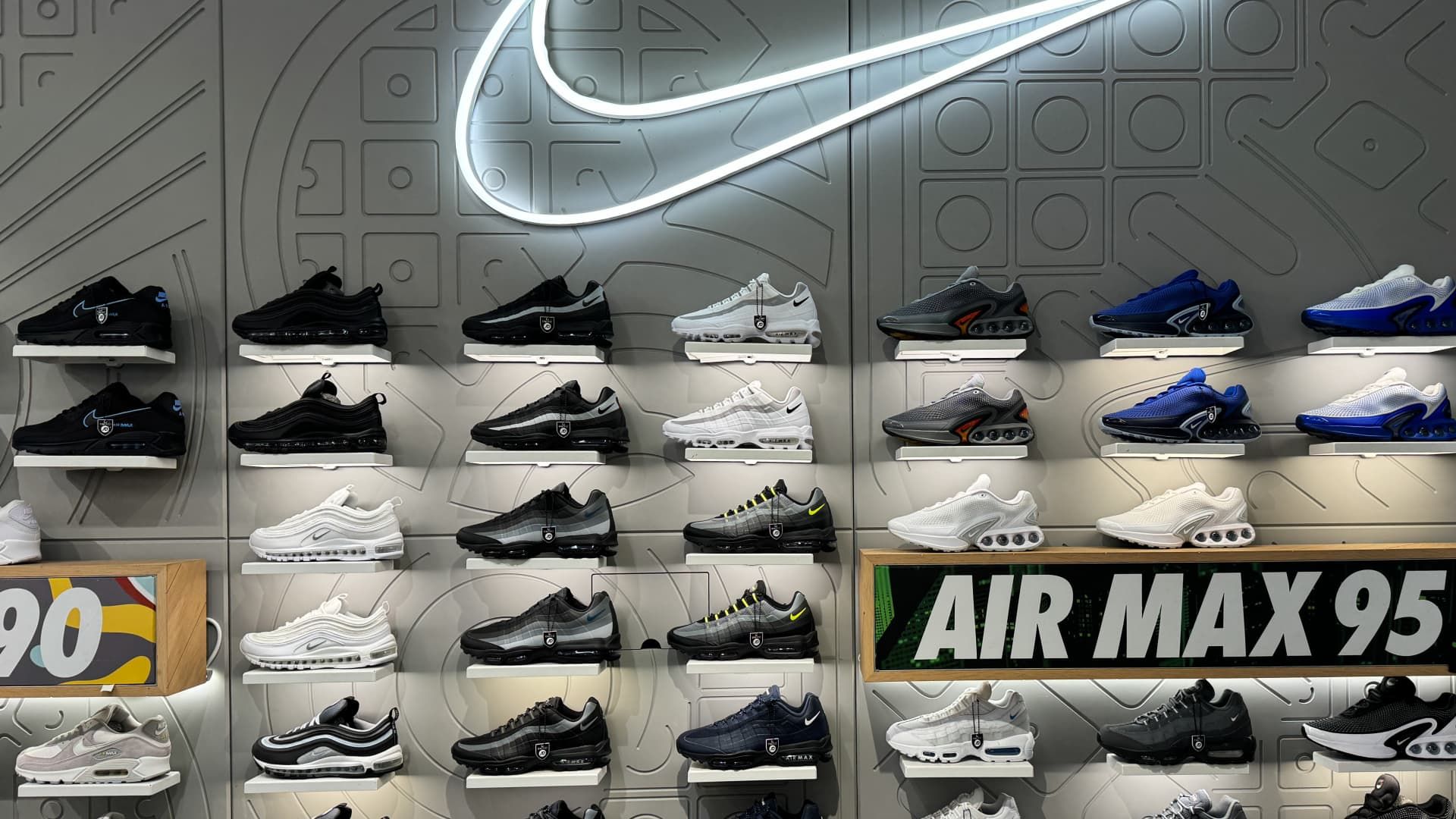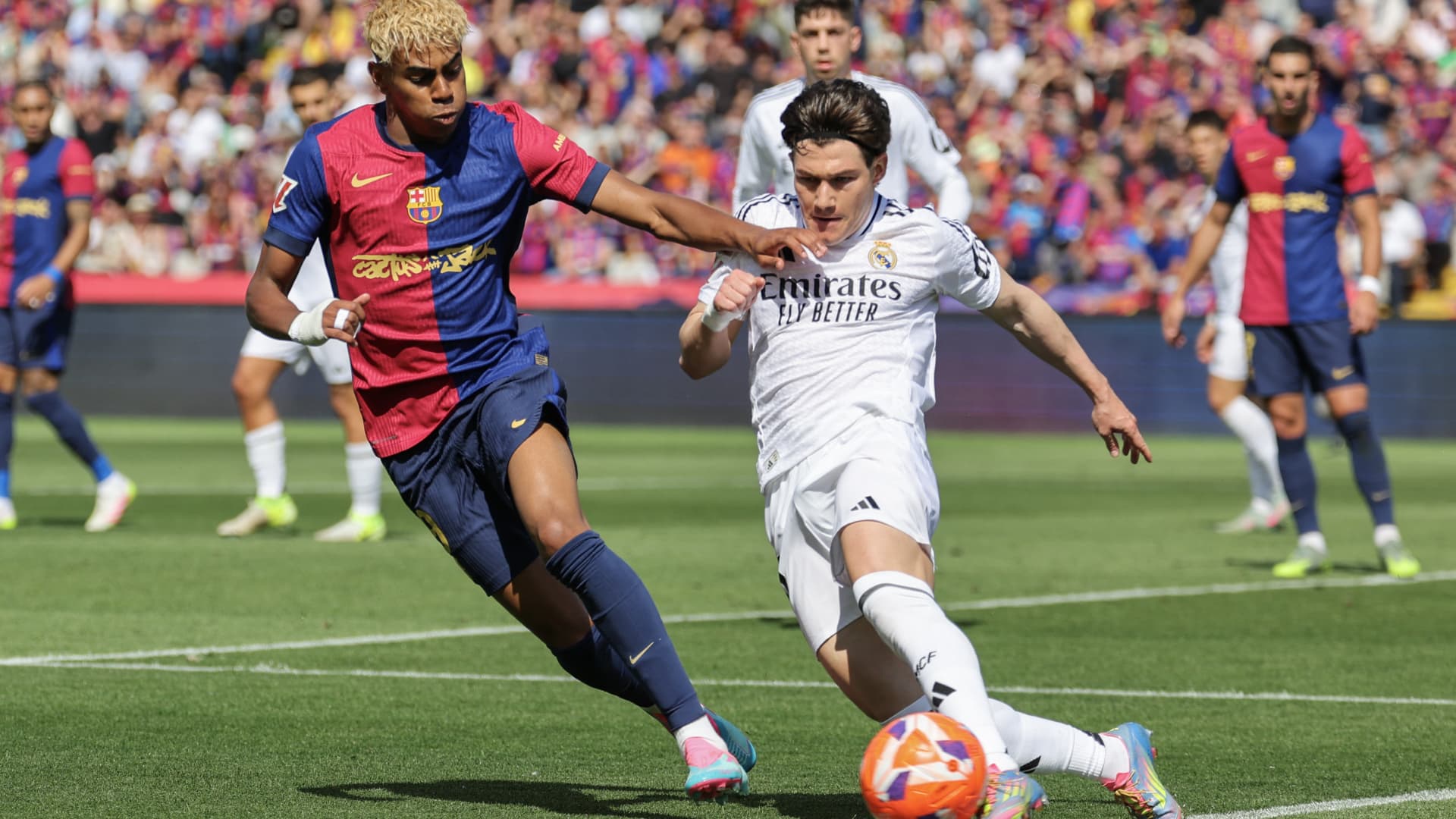Nike shoes and logo are seen in a store in Nice, France, May 28, 2024.
Jakub Porzycki | Nurfoto | fake images
Nike On Thursday it reported its slowest annual sales growth in 14 years, excluding the Covid-19 pandemic, as the sneaker giant warned of “challenges” that led it to cut its outlook for the current year.
“We are achieving better balance across our portfolio. While we are encouraged by our progress, our fourth-quarter results highlighted the challenges that have led us to update our outlook for FY25,” CFO Matthew Friend said in a statement. Press release. “We are taking steps to reposition NIKE to be more competitive and drive long-term sustainable and profitable growth.”
Nike's exact forecasts are unclear. The retailer typically releases them during its earnings conference call, scheduled for 5:00 p.m. ET.
Last quarter, the company said it expected revenue and profit to grow in fiscal 2025, but did not say by how much. It said it expects revenue in the first half of fiscal 2025 to decline in the low single digits, reflecting “a subdued macroeconomic outlook around the world.”
Shares fell about 6% in extended trading.
For the fiscal fourth quarter, the company comfortably beat earnings estimates as its cost-cutting efforts continue to pay off, but Nike fell short on revenue.
Here's how Nike fared during the period compared with what Wall Street expected, according to a survey of analysts by LSEG:
- Earnings per share: $1.01 adjusted vs. 83 cents expected
- Revenue: $12.61 billion vs. $12.84 billion expected
The company's reported net income for the three-month period ended May 31 was $1.5 billion, or 99 cents per share, compared with $1.03 billion, or 66 cents per share, a year earlier.
Sales fell to $12.61 billion, down about 2% from $12.83 billion a year earlier.
In fiscal year 2024, Nike reported sales of $51.36 billion, which is a similar level to the previous year. This is the slowest pace of growth the company has experienced since 2010, not counting the Covid-19 pandemic.
Nike executives attributed the sales decline to a number of factors. They said its lifestyle business declined during the quarter and that momentum in its performance business, such as basketball and running shoes, was not enough to offset it. Nike saw weakness in online sales in April and May because it had a higher share of lifestyle products. It also saw traffic decline in China starting in April due to macroeconomic conditions in the region.
Despite the drop in traffic in China, sales in the region exceeded Wall Street expectations, according to StreetAccount, reaching $1.86 billion, compared to estimates of $1.79 billion. It was the only geographic segment to beat estimates for the period.
Sales in North America, its largest market, came to $5.28 billion, missing StreetAccount's expectations of $5.45 billion.
In Europe, the Middle East and Africa, Nike reported revenue of $3.29 billion, compared to estimates of $3.32 billion. In Asia Pacific and Latin America, Nike reported sales of $1.71 billion, compared to estimates of $1.77 billion.
The sneaker leader loses his crown
In recent months, the longtime leader of the sneaker and athletic apparel category has found itself in a rough patch, working to stay ahead of a host of upstart competitors. Its revenue growth has slowed, it has been criticized for falling behind on innovation and it is in the process of backtracking on its direct sales strategy, which failed to produce the results the company had anticipated.
With the change in strategy, Nike had been working to drive sales through its own website and stores rather than through wholesalers such as shoe drawerBut it recently began to backtrack on that move, telling CNBC in April that it had gone too far in distancing itself from wholesalers.
The strategy can be more profitable and give companies better control over their brands and customer data, but it can also create logistical headaches and bring unexpected and costly setbacks.
During the quarter, Nike's direct revenue amounted to $5.1 billion, down 8% from the same period a year earlier. Meanwhile, wholesale revenue rose 5% to $7.1 billion, reflecting Nike's change of heart about direct sales.
According to some analysts, the company's focus on developing its direct sales strategy led Nike to stop paying attention to innovation, the main attribute that had long made the company stand out.
As the retailer increasingly released old favorites like the Air Force 1, startups like On Running and Hoka surprised runners with brand new designs and converted them into customers.
Nike has said it would reduce the number of products it has on the market in favor of new innovations and is betting that a host of new styles, coupled with the 2024 Paris Olympics, can put the company back on solid footing.
“We are addressing our near-term challenges while making progress in the areas that matter most to NIKE's future: serving the athlete through performance innovation, moving at the pace of the consumer and growing the entire marketplace,” CEO John Donahoe said in a statement. “I am confident our teams are aligning our competitive advantages to drive greater impact for our business.”
Some of Nike's challenges are also out of its control. The company has had to deal with a difficult macroeconomic environment that has caused consumers to reduce their sneaker purchases, and it may also be finding itself on the wrong side of trends. Some analysts expect the overall sports category to face a slowdown this year as denim comes back into fashion among consumers and shoppers looking to dress up after years of dressing down.
Nike, meanwhile, has focused on cutting costs to at least generate strong profits in the face of shaky sales.
In December, it announced a sweeping restructuring plan to reduce costs by about $2 billion over the next three years. Two months later, Nike said it was laying off 2% of its workforce, or more than 1,500 jobs, so it could invest in its growth areas, such as athletics, women's and the Jordan brand.
— Additional reporting by CNBC's Sara Eisen and Jessica Golden









